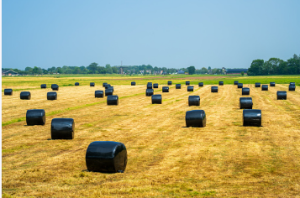Silage covers are a great way to protect your grain from the elements and increase the life of your crop. These covers can help prevent visible spoilage, reduce the number of nutrients lost, and keep weeds from growing. They can also seal and protect edges and seams.
 Reduces loss of nutrient value
Reduces loss of nutrient value
Many studies have examined how microbial inoculants can reduce the loss of nutrient value of silage. The additives are used to improve the preservation and quality of crops. A molasses and rice bran mix is more effective than either alone.
Silage is an excellent source of feed for livestock. However, proper ensilage techniques must be applied to ensure the best nutrient and hygienic qualities.
Several factors influence the silage’s quality. These include biological factors, technological methods and the number of additives. While many additives may be beneficial, they can also have negative impacts. Learn more here at unipak.com.au/silage-pit-covers.
Inoculants are natural products that have been added to the silage to improve the quality of the end product. For example, microbial inoculants can increase dry matter recovery and lower ammonia nitrogen content. They are also able to inhibit certain undesirable microbes.
Clostridium bacteria can oxidise amino acids and produce butyric acid. They can colonise silage when the oxygen availability is low. When they are not controlled, they degrade the quality of the end product.
Enterobacteria are no-spore-forming bacteria that can degrade proteins. They can also be harmful to animals. Other microorganisms that compete with enterobacteria are lactic acid bacteria, yeasts, and fungi. Some of these are important species for the successful fermentation of silage.
Fibre-degrading enzymes are also crucial in silage. They require a high temperature of 50 degrees Celsius and a pH of 4.5. Adding enzymes increases fibre digestibility and improves palatability.
Prevents weeds from sprouting
Silage covers can be an excellent way to prevent weeds from sprouting in your garden. They can be used for both cover cropping and fallow beds. While you won’t get rid of all weeds, you can eliminate the worst of them.
Tarps are also a clever way to incorporate green manure into your weed control routine. When appropriately applied, they will reduce weed pressure, improve soil health and reduce the amount of weed mitigation needed.
Some farmers use silage tarps in their no-till growing practices. It is especially beneficial for those growing salad crops. You can also use a tarp to cover an existing bed if you leave it fallow for a season.
Another option is to cover your bed with organic mulch. It will prevent weeds from sprouting and keep your grass from growing. It will also help reduce the spread of pests and pathogens.
Some growers may want to plant a cover crop in their next bed. In the long term, this will reduce the number of weed seeds in the soil. Also, it can speed up the germination process.
Some growers will apply a slurry of compost on the bed. It will make the soil moister and encourage microbial activity. Microbes are essential to the composting process and will break down weed seedlings. Aside from reducing weeds, the microbial action will also feed your subsequent crops.
Prevents wind lift
It’s essential to use silage covers to prevent wind lift. It is especially true when using large or lumpy silage piles. The thicker the cover, the better. A thicker cover will also resist tears. You may need a net to prevent wind lifting if you have a thin silage cover.
A flexible polymer is the most common material used to make a silage cover. There are several types of polymers to choose from. Depending on the type of cover you need, you can select from polyethylene, PVC, or a combination of the two. While there are many options, not all materials are suitable for this purpose.
There are better choices than thin materials, such as nylon, for a general silage cover. However, they are too flimsy to withstand the pulling power of heavy machinery. Also, they are prone to UV breakdown. Learn more here at unipak.com.au/silage-pit-covers.
On the other hand, RPE, or reinforced polyethylene, is a much better option. RPE is a more challenging material that is also more durable. Plus, RPE has the best chemical resistance. You can even make custom-fitted covers.
Another option is to use a solid, non-woven geomembrane. These can double as a general cover and also act as an oxygen barrier. However, concrete, non-woven geomembranes are heavier than woven ones. In addition, these types of surfaces often have a higher water impermeability.
Finally, consider installing a frame or weighting device to prevent wind lift. These items will usually have embedded rings to hold the material in place.


